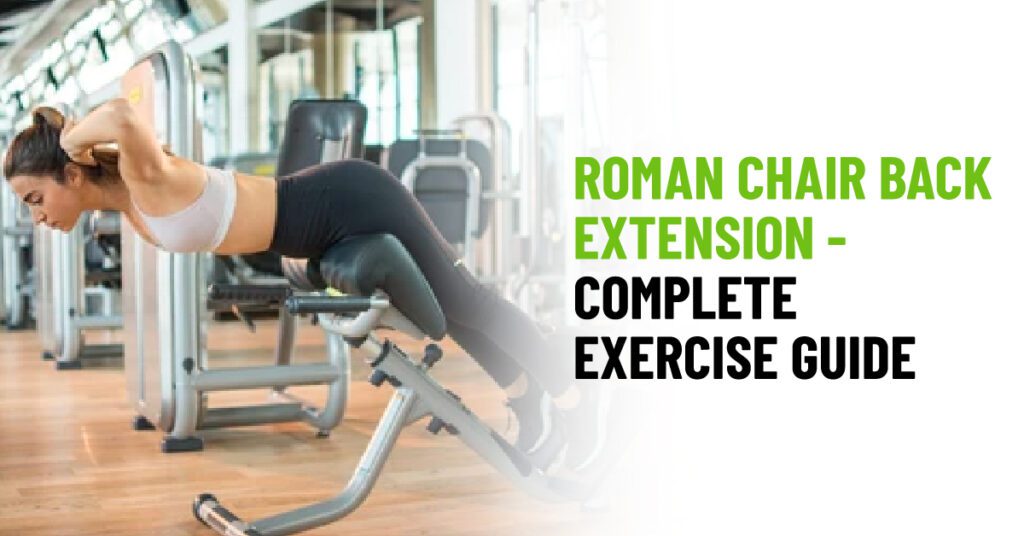Is Kayaking Good Exercise?

Also available in
Kayaking has emerged as a popular recreational activity that combines adventure, nature, and fitness. Many people are drawn to the idea of gliding through serene waters while enjoying the beauty of the outdoors. But beyond its recreational appeal, is kayaking good exercise? In this comprehensive guide, we will explore the topic of kayaking as exercise and delve into its physical benefits, its impact on cardiovascular health, muscle strength and endurance, weight loss potential, mental well-being, safety considerations, and tips for getting started.
Why is Kayaking Good Exercise?
There are several reasons why kayaking is considered an excellent form of exercise:
Enjoyable and Engaging: Kayaking offers an enjoyable and engaging workout experience, allowing you to explore new places and encounter nature while exercising.
Versatile and Customizable: Kayaking can be tailored to different fitness levels and preferences, accommodating various goals and allowing for customization.
Stress-Relieving and Therapeutic: Being on the water and surrounded by nature during kayaking creates a therapeutic environment, reducing stress and improving mood.
Social and Community-oriented: Kayaking can be enjoyed individually or as a social activity, fostering social interaction and a sense of community.
Outdoor Connection: Kayaking allows you to connect with nature, experience the outdoors, and enjoy the benefits of fresh air, sunlight, and natural surroundings.
The Physical Benefits of Kayaking
Full-Body Workout
Kayaking provides a comprehensive full-body workout that engages multiple muscle groups. As you paddle through the water, you’ll feel the resistance, which requires the use of your arms, shoulders, back, and core muscles to generate power and propel the kayak forward.
Additionally, your legs and hips contribute to stability and help you maintain proper posture. The constant movement and coordination required for paddling provide an excellent opportunity to strengthen and tone your entire body.
Cardiovascular Fitness
Engaging in kayaking regularly can significantly improve your cardiovascular fitness. Paddling involves continuous movement, which elevates your heart rate and enhances blood circulation.
As a result, your cardiovascular system becomes stronger, leading to improved endurance and stamina.
The sustained effort of kayaking can help lower blood pressure, reduce the risk of heart disease, and enhance overall cardiovascular health.
Muscle Strength and Endurance
Kayaking is an effective way to build muscular strength and endurance, particularly in the upper body. The repetitive nature of paddling helps develop the muscles in your arms, shoulders, and back.
As you paddle against the resistance of the water, these muscles are constantly engaged, leading to increased strength over time.
Moreover, the core muscles are activated to stabilize your body and maintain balance, which contributes to improved posture and overall core strength.
Low-Impact Exercise
One of the significant advantages of kayaking is that it is a low-impact exercise. Unlike activities such as running or high-intensity workouts that put stress on the joints, kayaking is gentle on the body.
The buoyancy of the water reduces the impact on your joints, making it an ideal option for individuals with joint pain, arthritis, or those recovering from injuries.
It allows you to engage in a challenging workout without placing excessive strain on your joints.
Weight Loss and Management
If weight loss or weight management is your goal, kayaking can be an effective addition to your fitness routine. The combination of cardiovascular exercise and strength training involved in kayaking helps burn calories and build lean muscle mass.
Paddling at a moderate intensity for an extended period can lead to significant calorie expenditure.
When combined with a healthy diet, regular kayaking sessions can contribute to weight loss and help you maintain a healthy weight.
Improved Mental Well-being
In addition to its physical benefits, kayaking also offers numerous advantages for mental well-being. Spending time on the water and immersing yourself in nature has a calming and soothing effect on the mind.
The rhythmic motion of paddling can help clear your mind and promote mindfulness.
Kayaking provides an escape from the daily stresses of life and offers a sense of freedom and tranquility. It can reduce stress, and anxiety, and improve overall mental health and well-being.
Tips for Beginners in Kayaking
If you are new to kayaking and want to give it a try, here are some tips to help you get started:
Take Lessons: Consider taking kayaking lessons from a certified instructor to learn proper techniques, safety measures, and essential skills.
Rent or Purchase Equipment: Start by renting kayaking equipment from a reputable provider to familiarize yourself with different types of kayaks and paddles. Once you’re comfortable, you can invest in your own equipment.
Choose the Right Kayak: Select a kayak that suits your body type, skill level, and intended use. Sit-in kayaks offer more protection from the elements, while sit-on-top kayaks are more beginner-friendly and easier to navigate.
Start with Calm Waters: Begin your kayaking journey on calm and sheltered waters such as lakes or slow-moving rivers. This will allow you to practice basic skills and gain confidence before venturing into more challenging environments.
Join a Kayaking Group: Consider joining a local kayaking group or club to meet experienced paddlers, learn from their expertise, and discover new kayaking locations.
Respect the Environment: Practice responsible kayaking by respecting wildlife, preserving natural habitats, and following local regulations regarding water access and environmental conservation.
Considering Safety When Kayaking
Before embarking on a kayaking adventure, it is essential to prioritize safety. Here are some key safety considerations:
Wear a Personal Flotation Device (PFD): Always wear a properly fitting PFD while kayaking to ensure your safety in case of an accident.
Learn Basic Kayaking Techniques: Familiarize yourself with basic kayaking techniques, including proper paddling strokes, how to navigate obstacles, and self-rescue techniques.
Check Weather Conditions: Before heading out, check the weather forecast and be aware of any potential storms or high winds that could affect your safety on the water.
Be Mindful of Water Conditions: Pay attention to water conditions such as currents, tides, and waves. Choose appropriate locations for your skill level and be prepared for changing conditions.
Inform Someone of Your Plans: Always let someone know your kayaking plans, including your intended route and expected return time. This makes sure that in the case of an emergency, someone will know where you are.
Equipment Essentials for Kayaking
To fully enjoy your kayaking experience, here are the essential equipment items you will need:
Kayak: Select a kayak based on your requirements and level of experience. Options include sit-in kayaks, sit-on-top kayaks, and inflatable kayaks.
Paddle: Choose a paddle that fits both your height and the kind of kayaking you plan to do. Paddles are made of various materials and lengths.
Personal Flotation Device (PFD): Invest in a comfortable and properly fitting PFD that meets safety standards. Ensure it is suitable for kayaking and provides buoyancy in case of emergencies.
Safety Gear: Carry the necessary safety equipment, including a first aid kit, a whistle, and signaling devices. These items can be crucial in case of emergencies or unexpected situations.
Protective Clothing: Wear appropriate clothing that provides sun protection, dries quickly, and keeps you comfortable.
Accessories: Additional accessories can enhance your kayaking experience, including waterproof bags or cases for storing personal items, a spray skirt for sit-in kayaks, and a bilge pump for water removal.
Conclusion
Kayaking is not only a thrilling and adventurous water activity but also a fantastic form of exercise. It offers a wide range of physical and mental health benefits, making it an ideal choice for individuals seeking an enjoyable and effective workout.
By following safety precautions, learning proper techniques, and exploring the beauty of nature from a kayak, you can embark on a fulfilling and rewarding fitness journey.
Frequently Asked Questions (FAQs)
Why do people love kayaking?
People love kayaking for its connection with nature, sense of adventure and exploration, physical fitness benefits, stress relief and relaxation, escape from routine, social connection, sense of achievement, creativity and photography opportunities, freedom and independence, and the community and camaraderie it fosters.
Can kayaking help with weight loss?
Absolutely! Kayaking is an excellent activity for weight loss. Regular kayaking sessions, combined with a balanced diet, can contribute to sustainable weight loss.
Is kayaking suitable for beginners?
Yes, kayaking is suitable for beginners. Many kayak rental companies offer introductory lessons and guided tours for individuals new to the sport. Starting with calm and sheltered waters is recommended until you become more comfortable with kayaking techniques and safety measures.
Can kayaking be done in all seasons?
Kayaking can be enjoyed in various seasons, depending on the climate and water conditions in your area. Many enthusiasts prefer kayaking during spring and summer when the weather is warmer. However, with the right gear and precautions, you can kayak in colder seasons too.
Is kayaking cardio or strength?
Kayaking is a combination of both cardio and strength exercises. It provides cardiovascular benefits by elevating heart rate and improving endurance. Paddling continuously engages large muscle groups, such as the arms, shoulders, back, and core, which helps build strength and muscular endurance. The repetitive nature of paddling against the resistance of the water requires sustained effort, contributing to both cardiovascular fitness and muscular strength development. Therefore, kayaking can be considered a cardio-strength exercise that offers a well-rounded workout for the body.
When should you not kayak?
You should not kayak in severe weather conditions, poor water conditions, if you have physical impairments or health issues, lack kayaking skills, in restricted areas, or if you are fatigued or intoxicated.
Is it safe to kayak alone?
Kayaking alone can be safe if you have sufficient experience, knowledge of the area, proper safety equipment, and adhere to safety precautions. However, there are additional risks involved compared to kayaking with a companion or in a group.
We hope this comprehensive guide to kayaking as exercise has inspired and informed you. Share your ideas and opinions in the comments section below, and don’t forget to forward this article to others you think would benefit from it.
You May Also Like To Read…
- How to Do Standing Leg Curls – Benefits, Variations, and Tips
- The Ultimate Dumbbell Front Squat Workout
- Donkey Kicks Exercise to Burn Fat Faster
- Wall Pilates Workouts for Strength and Flexibility
- Reverse Clamshell Exercise: The Ultimate Core Activator
- How to Get Better at Pull-Ups
- 7 Minute Workout for Abs






